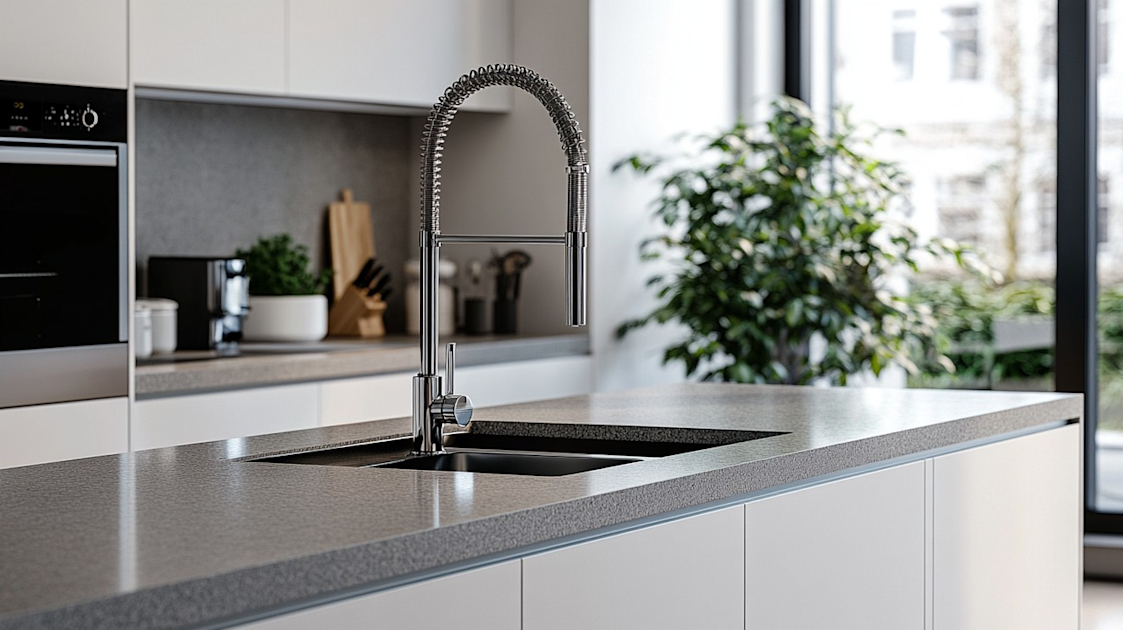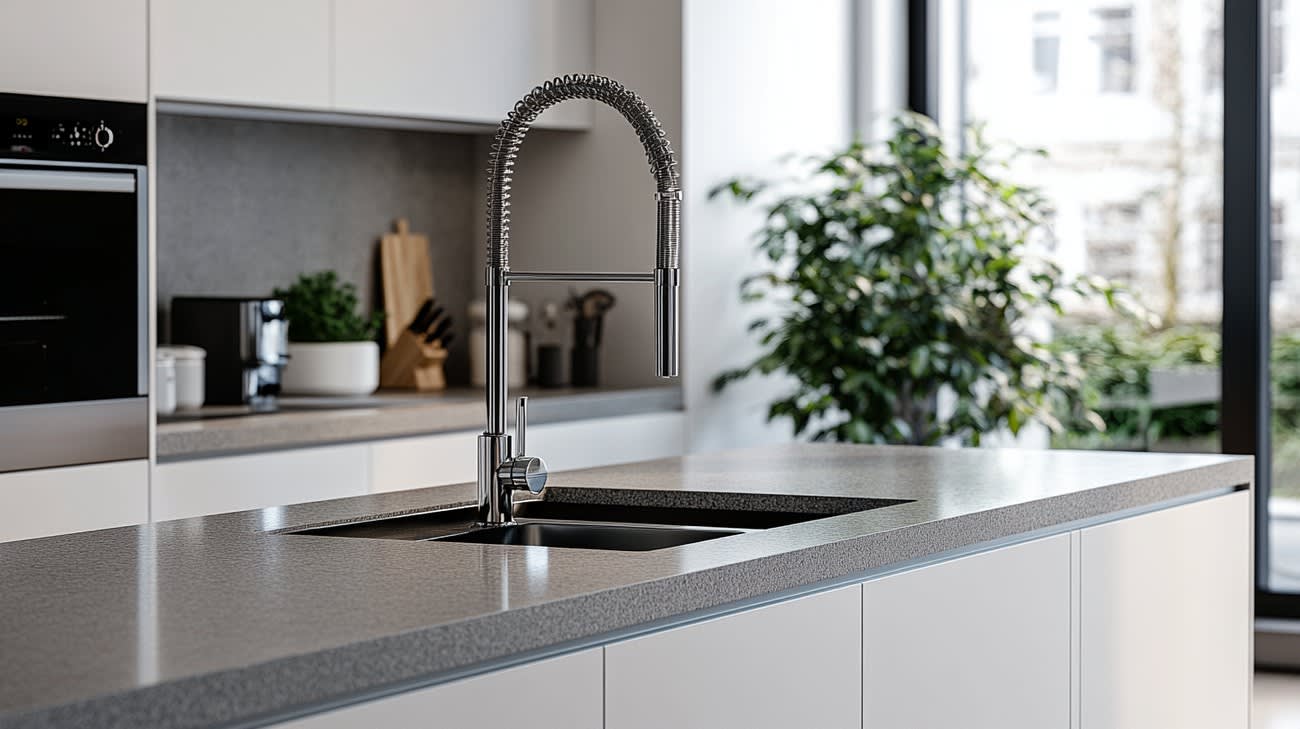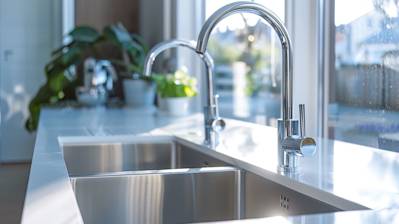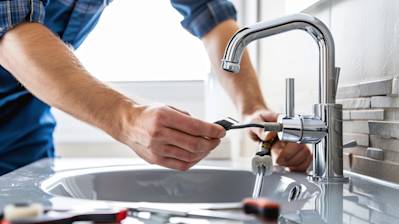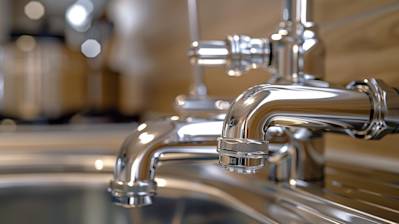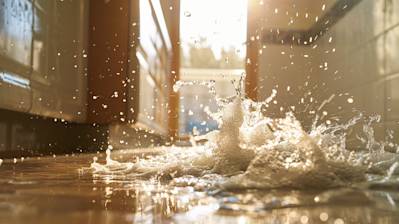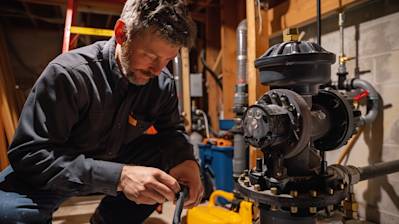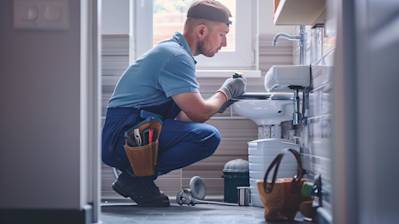All homeowners should familiarize themselves with an essential component of their plumbing system: the P trap. This often neglected, but critical fixture keeps our homes odor-free and sanitary. In this informative blog article, we delve deeper into the world of the P trap, its function, types, how-to installation and maintenance, and common issues you might encounter.
What Exactly is a P Trap?
A P trap is a type of waste-water pipe used in plumbing systems. It is designed in the shape of the letter 'P', hence the name. This particular pipe is an essential component of your home infrastructure, smartly designed to play an essential role in maintaining hygiene.
Its primary function is to trap debris that has gone through the drain that could potentially cause blockage. Additionally, it should prevent unwanted gases from resurfacing back into your home through the drain pipes. Thus, it acts both as a filter and a gas barrier.
The Anatomy of a P Trap
The P trap consists of three main components:
- The slip nut - This allows for easy attachment and detachment of the pipe.
- The curved trap piece - This is where water remains after usage, creating a seal to prevent foul sewer gas from entering your household.
- The waste tube - This extends to the wall, carrying water and excess materials from the sink to the main sewage system.
The Different Types of P Traps
There are various types of P traps, mainly distinguished by the materials used in their construction. Here are some commonly used types:
- PVC P Traps - Made from polyvinyl chloride, these are the most popular due to their durability and resistance to corrosion.
- Brass P Traps - Brass models are significantly strong, resistant to rust, and are often used in visible settings due to its aesthetic appeal, such as in pedestal sinks.
- Chrome P Traps - Chrome models are the most visually attractive and are typically used in high-end bathroom fixtures.
Installing a P Trap
While the installation process may seem complicated, it is quite simple with the right guidance. Follow these steps for an easy P trap installation:
- Prepare your tools: For this task, you will need channel-lock pliers, a bucket, and your new P trap kit.
- Remove the old trap: Use your pliers to loosen the slip nuts and remove the old P trap. Be sure to have your bucket ready to catch any residual water.
- Clean the area: Before installing the new one, clean the area thoroughly to ensure a clean installation.
- Install the new trap: Place the new trap in place and tighten the slip nuts by hand. Then use your pliers to securely fasten them, ensure not to over tighten and crack the plastic.
Troubleshooting Common Issues with P Traps
P traps are susceptible to a few common issues:
- Clogs - If the sink or bathtub is draining slowly or not at all, there may be a clog in the P trap. You can remove this by loosening the slip nuts and removing the trap to clean it out.
- Leaking - If there is a puddle of water under the sink, it's likely there's a leak in the P trap. First, try tightening the slip nuts. If the leak persists, you may need to replace the trap.
- Dryout - If a foul odor is coming from the drain, the water that should be in the trap may have evaporated, enabling sewer gases to escape into your home. To solve this issue, run the water to refill the trap.
Essential Maintenance Tips for Your P Trap
Here are a few easy maintenance tips for your P trap:
- Frequent Checks - Regularly inspect your P trap for signs of leaks or damages.
- Clean it regularly - Regular cleaning can prevent the build-up of debris and avoid potential clogging.
- Professional Help - If any issues are beyond your skills, don’t hesitate to contact a professional plumber.

Frequently Asked Questions about P Trap
What Is The Purpose of a P Trap?
A P trap serves a couple of vital functions in a plumbing system. First and foremost, it prevents sewer gases from entering a home or building. The water that remains in the P trap after you use a sink, shower, or other drainage point forms a barrier that keeps those noxious gases from wafting into your living spaces.
How Does a P Trap Work?
A P trap works by using a small amount of water to form a barrier between the open air and the drainage pipes. When water from the drain enters the P trap, it creates a seal that prevents sewer gases from escaping back up the pipe.
When Should I Replace My P Trap?
Typically, you should replace your P trap as part of regular plumbing maintenance every few years. However, if you notice foul smells, slow drainage, or leaking near the P trap, it may need to be replaced sooner.
Can I Clean My P Trap Myself?
Yes, you can clean a P trap yourself. To do this, first place a bucket or pan under the P trap. Then loosen the slip nuts that hold it in place and allow the water to drain out. Finally, use a bottle brush or similar tool to clean out the P trap pipe.
Where Is the P Trap Located?
The P Trap is located beneath the fixture that it's connected to. For a sink, it will be located directly below the sink in the under-sink cabinet. For a bathtub, it will typically be located behind an access panel in the wall near the tub.
What Materials Are P Traps Made From?
P Traps can be fabricated from several types of materials, including PVC plastic, chrome-plated brass, and copper. The type of material you need will depend on your specific plumbing configuration.
Why Does My P Trap Keep Leaking?
If your P Trap is leaking, it's possible that the trap itself is cracked or that the connections are not tight enough. It's best to inspect the trap and the connections to determine the exact cause.
Can a P Trap Be Installed Backwards
No, a P trap must be installed in the correct direction in order for it to operate effectively. If it's installed backwards, sewer gases can escape, leading to unpleasant odors.
Why Is There Water In My P Trap?
The water in your P Trap is an essential part of how the trap operates. This water barrier prevents sewer gases from coming up the pipe and into your home.
What Should I Do If My P Trap Is Dry?
If your P trap is dry, it's not able to block sewer gases from entering your home. You can simply pour a bucket of water down the drain to refill it and create the necessary water barrier.
How High Above the Floor Should a P Trap Be?
For bathroom sinks, the plumbing code specifies that the P trap must be installed between 6 and 20 inches above the floor. For kitchen sinks, the ideal height is between 6 and 18 inches above the floor. Always check your local building code to ensure compliance.
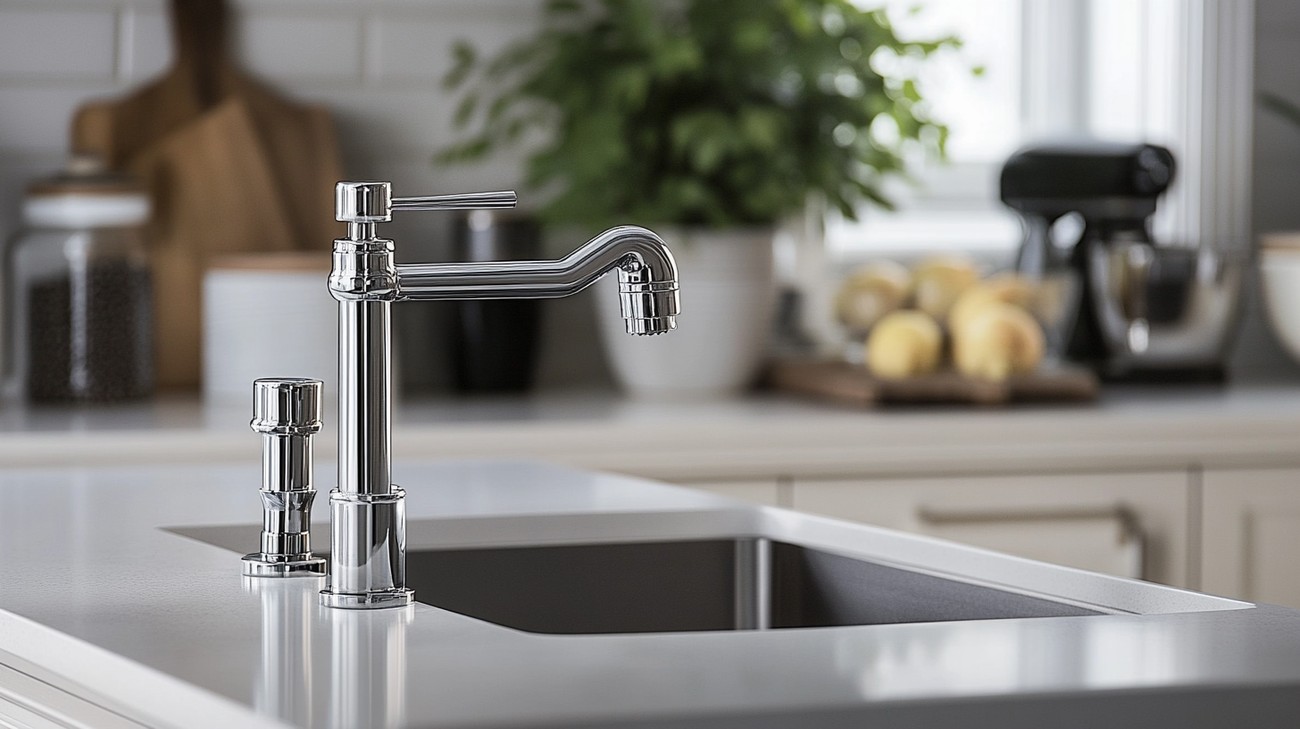
Pros of a P Trap
Easy Installation
Most P traps are fairly easy to install. Usually, they require no special tools or advanced plumbing knowledge. All that's needed for the installation is the P trap kit itself and a wrench. The easy installation makes it practical for homeowners or renters to install it by themselves if they choose to do so.
Prevents Sewer Gases
One of the primary purposes of a P trap is to prevent sewer gases from entering your home. The U-shaped design of the trap creates a water seal that blocks these harmful and unpleasant odors. This is a significant advantage because it contributes to the comfort and cleanliness of your home environment.
Cost-Effective
P traps are usually very affordable. They are made from a wide variety of materials, which means that there is a P trap for almost every budget range. The fact that they can also be installed without the help of a professional further adds to their cost-effectiveness.
Versatility
The P trap is the most common form of trap due to its versatility. It can be used in numerous applications, including sinks, baths, and showers. They also come in a variety of sizes to accommodate different drain diameters and setups.
Prevents Clogs
Another pro of P traps is their ability to prevent potential clogs. The U-shape design allows for easy water flow while catching debris that could potentially create a clog. This again contributes to the overall cleanliness and functionality of your home's plumbing system.
Cons of a P Trap
Frequent Cleaning
While the P trap's design presents several pros, it also leads to one of its main cons: the necessity of frequent cleaning. The same U-shape that catches debris and prevents clogs can also collect this debris over time, leading to the trap itself becoming clogged.
Can Dry Out
If a P trap is unused for a period of time, the water sealing the P trap may evaporate. Once this water evaporates, the seal is broken, and sewer gases can enter your home. This typically occurs in second bathrooms, vacation homes, or other infrequently used locations.
Potential for Leaks
While P traps are generally very durable, they are not immune to failures. P traps can erode, crack, or break over time, which could lead to leaks. Leaks can cause water damage to your property and further plumbing issues.
Size Encumbrance
For some installations, the size of the P trap can be a challenge. As the P trap needs to retain a certain amount of water to maintain its seal, it does require a certain amount of space. In tight installations or where aesthetics are important, this can be a downside.
Material Dependent Durability
Although the versatility of materials used for P traps can allow for various price points, it also means that not all P traps are created equal. For example, cheaper plastic P traps might not be as durable or long-lasting as their metal counterparts.

Myths / Misconceptions about P Trap
Understanding how a plumbing system works can be confusing for most homeowners or even for beginners in the plumbing world. One common item that tends to create a lot of confusion is the P trap. It's a crucial part of any sink, toilet, or tub, yet it is often misunderstood. Here are some common myths and misconceptions about the P trap that need to be corrected.
Myth 1: P Traps are Not Necessary
Misconception
Some people believe that P traps are an optional part of a plumbing system. This is not true. They are vital and are in fact a legal requirement in most municipalities and states across the USA. Without a P trap, sewer gases can easily make their way into homes and business premises, which can be dangerous.
The Truth
P traps are essential because they create a water barrier that prevents sewer gases from entering the home. This is not just about bad odors, but about the potential for hazardous gases to pose a danger to health.
Myth 2: P Traps Only Have One Size
Misconception
Another myth is that P traps only come in one size. People who believe this may end up buying the wrong size for their fixtures, which can lead to significant plumbing issues.
The Truth
In reality, P traps come in a variety of sizes to match the type and size of the fixture it is connected to. It's important to match the P trap size to the fixture's drain line size, to ensure a snug, leak-free fit.
Myth 3: P Traps Never Need Maintenance
Misconception
Some homeowners believe that once a P trap is installed, it never needs any attention, cleaning or maintenance. This is a dangerous misconception that could lead to plumbing damage and expensive repairs.
The Truth
P traps, like any other part of your plumbing system, require regular routine maintenance and cleaning. They can and do build up debris over time, which can lead to clogs or leaks if not addressed. A well-maintained P trap is likely to last much longer and cause fewer issues.
Myth 4: Any Liquid Can be Used to Fill the P Trap
Misconception
Another misconception is that any household liquid can be used to refill a P trap. People who believe this myth might pour anything from cooking oil to cleaning products into their drains to keep the P trap full.
The Truth
While it is true that the liquid in a P trap creates a seal that keeps out sewer gases, not just any liquid can do this job effectively. Ideally, the P trap should only be filled with water. Using other liquids could potentially damage your plumbing system or create a health hazard.
Myth 5: P Traps and S Traps are the Same
Misconception
A common misconception is that there's no practical difference between P traps and S Traps. This could not be further from the truth.
The Truth
While they serve similar roles, P Traps and S Traps are not the same. One of the main differences is that an S trap's design can allow water to be siphoned out, potentially allowing sewer gases into the home. P Traps, on the other hand, do not have this problem, which is why they are commonly used in modern plumbing systems.
In conclusion, a good understanding of the P trap is crucial in maintaining a healthy and efficient plumbing system. Busting these myths and misconceptions about the P trap will go a long way in ensuring your home's plumbing system operates smoothly and safely.
Remember, when in doubt, always reach out to a professional plumber for advice.
Summary
The plumbing industry uses the P trap for the essential job of keeping your home or building smelling clean. This plumbing fixture is called a P trap due to its unique shape, resembling the letter 'P'. When functioning properly, it's a key player in preventing unpleasant odors or harmful gases making their way back up your pipes and into your environment.
Students of plumbing 101 will tell you that the P trap owes its effectiveness to its clever, water-based design. This fixture keeps a small amount of water in the curve of the ‘P’ shape after each use. This water acts as a simple, yet effective barrier, blocking smells and gases from re-entering your home through your pipes. So, even though it’s mostly unseen, the silent hero of your plumbing system is the P trap.
Knowing how the P trap operates can give people even with limited plumbing knowledge a better understanding of their home’s system. From bathrooms to kitchens, the P trap's beneficial role in plumbing system cannot be overstated. If you ever experience bad odors despite regular cleaning, now you know to check out the P trap’s condition before raising any alarms.
About KYPD Plumbing
KYPD Plumbing is your go-to local plumber in Lexington, KY. With a passion for creating a hassle-free plumbing experience, we’ve been serving our community with trusted and professional service for several years. Our team of highly-qualified plumbers specializes in both commercial and residential plumbing, handling everything from leaky faucets to complex installations. Our commitment to delivering top-notch customer service and quality workmanship has helped us earn a reputation for reliability and honesty. At KYPD Plumbing, we're not just about fixing your pipes - we're about ensuring your peace of mind when it comes to all your plumbing needs.
Tags: sink, plumbing, drainage,

